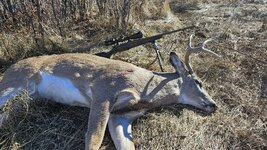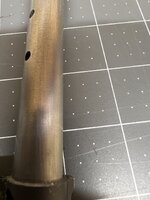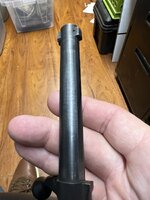Most of the older shooters I know need all the help they can to keep stable, which can be exacerbated by eyes that aren't as sharp as they used to be.
For shots inside 200, all the old school rifles and shooting work, so there is no sense trying to upgrade to PRS/precision type changes. But, I will draw from precision shooting for as many ideas/tricks as possible to make shooting easier for every hunter as an extension their capabilities, like using a chair/stool, tripod/bipod for front support, pillows for rear support, and whatever other creative solutions I can muster that doesn't over complicate the situation.
Because I believe that recoil influences every rifle before the bullet leaves the barrel, any excess recoil will exploit the wobble which is compounded in a light rifle and produce bigger shot patterns. Also, it might not be about spotting shots, but at close range target re-acquisition can be much more difficult for older hunters. That is something to test and consider.
I think the .308 is significantly more recoil and that makes it less effective in a light rifle. Heck, the PRS and competition crowd goes with a heavy rifle and baby 6mm like the 6 dasher or 6 GT, which are both smaller than a 6 creed and .243. It is for recoil management and spotting shots. "Free recoil" is a thing because we influence rifles until the bullet leaves the barrel. Bench rest shooters also use heavy rifles, and that isn't for spotting shots at all.
Its about tradeoffs. I think the benefits of shooting a lighter recoiling rifle create a deadlier shooter than benefits of a bigger bullet making a bigger hole. Bigger doesn't make things "too dead" if you can't shoot the rifle--that's what going bigger crowd can miss.
Speed kills and speed expands copper. A 6mm bullet expanding to the maximum will be enough to kill the same as a .308 if shot in the same spot. But, that is the key, you'd have shoot the .308 as good as the .243. The thing that matters most is putting an expanding bullet of some sort through the vitals--bottom line. And, the faster a copper bullet goes the better.
In my mind the calculus is like this: A bigger hole is often considered insurance against a bad shot. It is true, but the underlying premise is based on the possibility of a bad shot. Prevention is better than a cure.
My focus for me and anyone else is on changing the odds in my favor, rather than compensating for what happens if the odds go against me. If the odds are really that bad, then it doesn't matter what bullet you shoot.
I tested my own shooting, and found that reducing recoil improves all aspects of my shooting, because bigger recoil requires more skill and focus. As for smaller bullets, I've been convinced they can be just as effective.
My recommendation is a .243, but if not that then a 6.5 cm.



